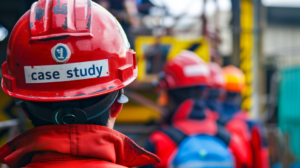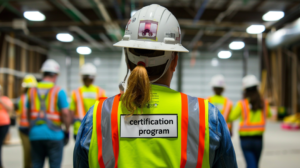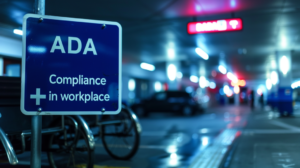Starting a new job marks the beginning of an exciting journey filled with opportunities for growth and contribution to a new team. However, amidst the excitement, it\’s paramount for new employees to prioritise their safety and that of their colleagues. Understanding the nuances of workplace safety is not just a responsibility but a crucial aspect of fostering a positive and secure work environment. This comprehensive guide will discuss how to provide new employees with a holistic approach to navigating their new workplace safely and confidently.
1. Embracing a Safety-Conscious Mindset
One of the fundamental steps towards fostering a safety-conscious culture is actively participating in safety initiatives as a new employee. Open communication channels between management and employees are pivotal in this process. Employees should feel encouraged to voice safety concerns and suggestions without fear of retaliation, fostering trust and collaboration within the organisation. Moreover, actively engaging in safety meetings and training sessions equips new employees with essential knowledge about workplace safety procedures and best practices.
2. Understanding Organisational Policies and Procedures
Familiarity with company-specific health and safety policies is indispensable for navigating the new work environment. New employees should take the time to understand these policies, whether through reading safety manuals, attending briefings, or seeking guidance from supervisors or safety officers. Knowing the location of emergency exits, first aid kits, and other safety equipment ensures preparation in case of unforeseen circumstances.
3. Prioritising Personal Safety Measures
Wearing appropriate personal protective equipment (PPE) is paramount to mitigate workplace hazards effectively. Whether it\’s safety glasses, gloves, or hearing protection, adhering to PPE requirements minimises the risk of injuries and illnesses. Furthermore, practising proper lifting techniques and maintaining good housekeeping habits are essential habits to prevent accidents and promote overall workplace safety.
4. Encouraging Active Participation and Communication
New employees should actively engage in safety meetings and discussions to stay informed about workplace safety issues. Participation in safety committees or focus groups allows employees to contribute their insights and suggestions towards improving safety initiatives and policies. Moreover, reporting hazards and incidents promptly enables swift resolution, preventing potential accidents or injuries.
5. Seeking Guidance and Promoting Continuous Learning
In the journey towards building a safety-conscious culture, new employees should never hesitate to seek guidance or ask questions when unsure about tasks or procedures. Supervisors, safety officers, and experienced colleagues can provide valuable insights and advice, ensuring tasks are performed safely and efficiently. Additionally, investing in additional certifications like the NEBOSH General Certificate demonstrates a proactive
commitment to workplace safety and enhances one\’s expertise in health, safety, and risk management.
It’s A Collective Responsibility
In conclusion, fostering a safety-conscious culture within an organisation is a collective responsibility that starts from day one. By embracing open communication, understanding organisational policies, prioritising personal safety measures, encouraging active participation, and promoting continuous learning, new employees play a crucial role in contributing to a safe and productive work environment. Ultimately, by amalgamating the insights from both articles, new employees can embark on their professional journey with confidence, knowing they are equipped to prioritise safety in every aspect of their work.





